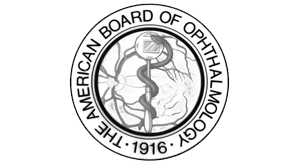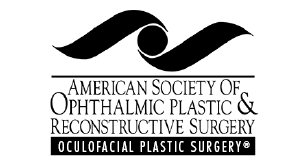Orbital Diseases & Disorders


The orbit refers to the eye socket, which contains the eye and its associated structures. The orbit contains, protects, and supports the eye and surrounding structures, including the nerves, blood vessels, muscles, and glands. Orbital diseases and disorders can be benign or malignant and include inflammatory, vascular, structural, or neoplastic disorders.
Orbital disease can encompass a variety of conditions, including infections, inflammations, tumors, congenital anomalies, and trauma that affect the orbit. The symptoms of orbital diseases may include bulging eyes (proptosis), double vision (diplopia), loss of vision, pain, and swelling.
Signs of orbital disease include proptosis (protrusion of the eye), double vision, pain, swelling, pain with eye movement, dilated blood vessels, and masses around the eye and eyelids.
The goal of an orbital evaluation is to identify the cause of the condition and its location, including systemic causes (e.g., tumor metastasis or inflammatory disease).
Dr. Kahana has unparalleled expertise in the unique field of orbital disease, with dozens of manuscripts and book chapters published and dozens of lectures given throughout the United States and internationally. He is the busiest orbital surgeon in the Midwest, one of the busiest in the world, often performing >10 orbital surgeries per week.
Orbital surgery is a specialized field that deals with the treatment of these disorders. It’s performed by ophthalmologists who have additional training in oculoplastic and orbital surgery and sometimes in collaboration with neurosurgeons or ENT surgeons (otolaryngologists or ear, nose, and throat doctors), depending on the complexity of the case.
Surgeries can range from minimally invasive procedures using endoscopic techniques to more extensive surgeries that may involve the removal of tumors, reconstruction of the orbital bones, or treatment of severe infections.
The goals of orbital surgery are to restore function, relieve symptoms, and reconstruct the patient’s appearance if deformity is a concern. Due to the complexity and the delicate nature of the orbital contents, these surgeries require high precision and careful planning, often with the aid of advanced imaging techniques like computed tomography (CT) or magnetic resonance imaging (MRI) scans to guide the surgical approach. Postoperative care is also crucial to ensure optimal recovery and to monitor for any complications.
Orbital tumors refer to growths that occur in the orbit, the bony cavity in the skull where the eyeball and its surrounding structures are located. It’s important to understand that while some eyelid lesions are benign (non-cancerous), others could potentially be malignant (cancerous).
The nature of the orbital tumor significantly influences the approach to treatment and prognosis. Symptoms of orbital tumors can vary depending on their nature, size, location, and growth rate.
It’s important to note that the presence of these symptoms doesn’t always indicate an orbital tumor, as other orbital diseases or conditions can also cause and mimic these symptoms. However, any such symptoms should be promptly evaluated as they can affect vision and eye health.
When an orbital tumor is suspected, a biopsy procedure or an excisional procedure is often necessary to determine its nature. These are both types of surgical procedures. These procedures are typically performed under general anesthesia, where the patient is completely asleep for surgery.
A biopsy of an orbital tumor involves removing a small piece of the tumor for examination under a microscope, while an excision involves removing the entire tumor. In a biopsy, a small incision in the most accessible part of the tumor, either through the eyelid skin or tissue around the eye, to ensure minimal disturbance to the surrounding tissues. Next, the tissue removed during surgery is examined under a microscope by a pathologist or a specialist who plays a crucial role in diagnosing diseases by examining tissues, cells, and bodily fluids.
For excisional surgery of an orbital tumor, the surgical approach depends on the tumor’s size, location, and relation to critical structures like the eye, eye muscles, and optic nerve. Advanced imaging techniques, such as magnetic resonance imaging (MRI) and/or computed tomography (CT) scans, are often used preoperatively to plan the surgery. The goal of excisional surgery is to remove the tumor in its entirety while preserving as much normal function and appearance as possible. Next, tumor tissue is examined under a microscope by a pathologist or a specialist who plays a crucial role in diagnosing diseases by examining tissues, cells, and bodily fluids.
Post-surgical care is crucial for recovery, and regular follow-up appointments are necessary to monitor for any recurrence, especially in the case of malignant orbital tumors. Oculoplastic surgeons work closely with neurosurgeons, ENTs, pathologists, oncologists, and radiation oncologists in a multidisciplinary team to provide optimum care.
A critical mission of oculoplastic orbital specialists is to reconstruct a socket when an eye is so diseased or injured that it must be surgically removed.
Removal of a diseased or dead eye is actually a very delicate, intricate procedure that preserves as much socket tissue as possible so that the reconstructed socket can hold a custom ocular prosthesis, which mimics the appearance and movement of a real eye. We work with all the ocularists in Michigan to make sure that patients get the best results possible even when the socket is compromised by disease or trauma. No two patients are exactly alike, and so while there are general categories of surgical approaches, the exact approach for each patient must be customized. Our practice has published on our excellent results even in tough situations, and we pride ourselves on our skills in this very unique branch of oculoplastic surgery.
Orbital fractures refer to breaks or cracks in the bones surrounding the eye, known as the eye socket or orbit. These types of fractures often occur due to trauma, such as a car accident, fall, sports injury, or assault.
The orbit is made up of several bones, and depending on which part is affected, the symptoms and severity can vary. Common signs of an orbital fracture include pain, swelling, bruising around the eye, eye movement limitations, double vision, and sometimes, a noticeable change in the eye’s position in the socket. In some cases, particularly with more severe fractures, you might feel numbness in the area due to nerve damage or difficulties with eating or chewing. In some cases, an extraocular muscle or connective tissue surrounding the muscle might get trapped in the broken bone, a condition called entrapment, which can lead to further complications. It’s important to note that even if the eye itself is not injured during a fracture, the surrounding structures can be affected, impacting the overall function of the eye.
Oculoplastic surgeons specialize in the assessment and surgical treatment of orbital fractures. The treatment approach depends on factors like the type and severity of the fracture, symptoms, and overall eye health. Not all orbital fractures require surgery – some can be managed with medications and close observation.
However, surgery is necessary when there’s significant damage to the bones, disrupted eye function, or cosmetic concerns. In cases of extraocular muscle entrapment, it’s crucial to free the entrapped tissue to restore normal eye movement. Orbital fracture repair is a surgical procedure typically performed under general anesthesia, where the patient is completely asleep for surgery. In this surgery, the surgeon typically involves making an incision through the eyelid or tissue around the eye to access the fractured bones, then repositioning and stabilizing them. This often requires placement of an orbital implant or plate and screws.
Post-surgery, patients are monitored closely for recovery of eye function. The goal is to not only repair the fracture but also to ensure the best possible functional and aesthetic outcome for the patient.
Orbital cellulitis is a serious infection that occurs in the tissues surrounding the eyeball. Orbital cellulitis can cause eye pain, redness, swelling, bulging of the eye (proptosis), vision loss, eye movement limitations, and diplopia.
It’s often caused by bacteria spreading from nearby areas, like the surrounding sinuses, trauma, or infection elsewhere in the body. Patients who are immunosuppressed or have a lowered immune system are more susceptible. This condition requires immediate medical attention and hospitalization for medical care. If left untreated, orbital cellulitis can lead to serious complications, including permanent vision loss, orbital abscess formation (pockets of pus), meningitis (infection of the membranes around the brain and spinal cord), or a brain abscess. It’s important to seek medical care quickly if these symptoms are present, as early treatment is crucial for a good outcome and to prevent serious complications.
Oculoplastic surgeons specialize in treatment of infections around the eyeball and orbit. Treatment of orbital cellulitis involves a combination of medical and surgical interventions, depending on the severity of the infection.
Initial treatment usually includes intravenous antibiotics to fight the infection, often in a hospital setting. Imaging studies, like a CT scan, are often performed to assess the extent of the infection and to check for any abscesses (pockets of pus) or other complications. In cases where the infection does not respond to antibiotics alone or if there’s an abscess present, surgical intervention may be necessary. Oculoplastic surgeons perform surgery around the orbit to treat orbital cellulitis. The goal of surgery is to drain any abscess and remove infected tissue, providing relief and aiding in the recovery process.
Throughout treatment, close monitoring is crucial to ensure the infection is resolving and to prevent any long-term effects on the eye and surrounding structures.
Oculoplastic surgeons often work closely with other specialists, such as infectious disease experts, neurosurgeons, or ENTs in a multidisciplinary approach to provide comprehensive care for patients with this condition.
Dacryoadenitis is an inflammation of the lacrimal gland, the gland responsible for producing tears. This gland is located in the upper outer part of your eye socket. This condition can be acute or chronic.
In acute dacryoadenitis, the onset of symptoms is rapid, often caused by a bacterial or viral infection. Patients typically experience pain, redness, and swelling in the area of the lacrimal gland, which can cause the eye to protrude or push downwards. It can also be associated with fever and a general feeling of being unwell. Chronic dacryoadenitis, on the other hand, develops more slowly and is usually less painful. It’s often related to systemic conditions like autoimmune diseases or cancer. In both cases, the inflammation can affect tear production, leading to dry eyes or excessive tearing. Since these symptoms can resemble other eye or orbital conditions, it’s important to get an accurate diagnosis to ensure proper treatment.
Treatment of dacryoadenitis typically depends on the underlying cause of the inflammation. It’s important to understand dacryoadenitis or inflammation of the lacrimal gland may require a surgical procedure called a lacrimal gland biopsy to understand its nature. In cases of acute dacryoadenitis caused by infection, the primary treatment involves antibiotics or antiviral medications.
In cases of chronic dacryoadenitis, especially when associated with systemic diseases such as an autoimmune condition or cancer, the treatment approach may involve systemic medications to manage the underlying condition. Oculoplastic surgeons often work closely with rheumatologists and oncologists in a multidisciplinary approach to provide patients the best possible care. Learn more about our Functional and Reconstructive treatment options.
We are oculoplastic surgeons specializing in orbital disease evaluation, management, treatment, and surgery. The goal of surgery is to provide patients with not only the best possible functional but also aesthetic outcomes. Each patient’s needs are very unique and require an individualized approach to treatment.
If you have an orbital condition, schedule an appointment with Kahana Oculoplastic & Orbital Surgery today.







